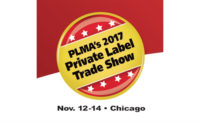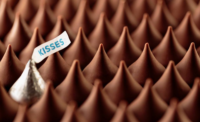When it comes to innovation, a beloved, top-hatted confectioner has the perfect formula.
“Invention, my dear friends, is 93 percent perspiration, 6 percent electricity, 4 percent evaporation and 2 percent butterscotch ripple,” Willy Wonka told a group of puzzled parents and children before swilling the brown concoction he mixed before them in the 1971 film “Willy Wonka and the Chocolate Factory.”
Brent Davis, a veritable Wonka himself, would offer a similar recipe, but he’d switch the butterscotch ripple with organic, bean-to-bar chocolate. Davis is founder and president of Indiana’s only bean-to bar chocolate operation, Mishawaka-based Davis Chocolate.
At-a-Glance: Davis Chocolate
Headquarters: Mishawaka, Ind.
Annual sales: $1 million - $3 million
Products: Chocolate bars, truffles, peanut butter cups, chocolate and peanut butter chips, chocolate cocktail sticks
Employees: 8-40, depending on order size
Brands: Davis Chocolate, Royal Indulgence
Over the last seven years, Davis has developed unique sweets and treats, including chocolate cocktail sticks and a peanut butter chocolate bar — with the peanut butter on the outside.
For fun, Davis created a liquid chocolate bar and snozzberry chocolate. And he’s also been seen sporting a top hat.
“We’re just trying to get out there and experiment,” Davis said. “I don’t try to rush from A to Z. I want to enjoy the path along the way.”
Though influenced by one of his favorite childhood movies, Davis’ background isn’t in chocolate — it’s in ink. At 15, Davis began working at Deco-Chem, Inc., the automotive and industrial ink company his father launched in 1971.
Davis worked his way up from the lab to the company’s helm, becoming president in 2006. But after coming across some equipment, he decided to study the chocolate-making process.
“If I’m not learning something, you might as well bury me,” Davis said. “I always feel like I have to be learning something through life. It’s a little more exciting to be able to learn something, know something and grow.”
He turned to the Internet, watching videos and reading papers others had written on the art of chocolate making, which isn’t totally unlike ink manufacturing, Davis said. He also noticed a need — not only for chocolate products, but for mid-sized manufacturers with adaptability and versatility.
In 2011, Davis launched Davis Chocolate. He focused on tapping the private-label market, which allowed him room to experiment and learn through trial and error without having to simultaneously nurture a brand.
“When tackling it, I thought that was going to be the best way,” Davis said. “With us focusing on private label, you need to have the most flexibility.”
Davis — a self-described “glutton for punishment” — also wanted his chocolate to be bean-to-bar in order have more control over the finished product. Through distributors, Davis sources cacao from Bolivia, Ecuador, Ghana, Hispaniola, Ivory Coast, Madagascar, Nicaragua, Papua New Guinea, Peru and Venezuela. For his own products, though, Davis uses Ecuadorian cocoa beans.
“It pairs well with wines, and there’s also a rounder flavor to it,” he said. “The other part is that it’s a little bit more intense. It has a little bit longer finish to it.”
Going organic was also crucial, both to fill a niche and balance pricing and margins with production costs. With his mission laid out, Davis started small, purchasing a Behmor roaster and a 40-lb. tempering unit. He also bought a three-roll refiner for reducing particle size, opting out of conching.
Davis worked on limited batches for about year before producing chocolate for customers. In 2012, he upgraded to a U.S. Roaster Corp. roaster and a Selmi tempering unit. And a few years ago, he purchased a Knobel depositor and cooling tunnel, allowing Davis Chocolate to produce bars, truffles, peanut butter cups and chips — up to 57,000 bars a day and 200 lbs. of chips an hour, Davis said.
With a wide range of capabilities, Davis Chocolate offers customizability to every aspect of the chocolate-making process, from the form of the end product to ingredients, certifications, darkness of the roast and cacao percentage.
That can be a lot for some less-experienced customers, Davis said.
“It’s a challenge working with some of the customers, because it can take anywhere from a few weeks to a year to get a private-label customer up and going.”
There’s also the timing. Davis said his private-label customers will outline the frequency of orders but not the exact time they’ll arrive. An order for a few thousand bars — or a million — might come in, making staffing tricky. Davis Chocolate will have between eight and 40 employees on hand. Annual sales, meanwhile, fluctuate between $1 million and $3 million.
To balance some of the uncertainty, Davis Chocolate began producing branded items in August. In addition to a line of organic chocolate bars with varying percentages of cacao, Davis Chocolate also offers organic chocolate chips and peanut butter chips made with coconut sugar.
Davis said the coconut sugar appeals to consumers with sensitivities to cane sugar or those in search of sweets with lower glycemic indices. As a result, those items have seen some success on Amazon.
“Some people want to stay away from sugar as much as possible, so they try to go toward something that’s an alternative... they want to do something that’s more natural,” he said.
However, Davis also wanted to enter categories in which he would not compete with his private-label customers. He set his sights on wine and chocolate pairings.
After trying dozens of wines — many from the Michigan area — Davis developed a guide for pairing them with chocolate of varying cacao percentages. The key, Davis said, is matching sugar levels, but flavors also play a role.
“We like working with the wineries — they’re fun,” he said. “And they come out with different wines all the time, which is amazing.”
Nonetheless, keeping truffles on hand has proved costly for at least one winery, Davis said, noting the truffles were disappearing at the hands of snacking staff members. However, Davis found a solution through a happy accident a year-and-a-half ago.
While calibrating the settings on the Knobel, ribbons of chocolate extruded in wavy pattern that, once solidified, became perfect cocktail sticks — and an easy way to pair wine and chocolate.
“You can put it into the wine glass, and it’s already paired up there by the bartender,” Davis said. “You can take a sip of wine and have a piece of chocolate along the way.”
Davis Chocolate cocktail sticks are available on Amazon and in local liquor stores. Davis said they’re also available for private label, with the option for peanut butter and ganache-filled varieties.
Apart from the wine sticks, Davis also saw an opening in the organic truffle realm. At the end of 2017, Davis Chocolate relaunched truffles under the Royal Indulgence brand. He described eating one as an “elegant” experience.
“Having a royal indulgence — you’re getting something that is organic, you’re getting something that’s made with lots of love,” Davis said. “You take a trip with it. It’s not just something where you bite and go. You want to try to enjoy it as long as possible.”
As Davis looks to expand his range, he’s adding new equipment. A new tempering unit was expected to arrive not long after Candy Industry’s visit in January, and a new enrober will arrive this month.
Davis Chocolate is also pursuing certification under the Safe Quality Food program, a requirement for many retailers.
“Once we get that, it’ll open more doors,” Davis said.
Though they likely won’t lead to a glass elevator, since Davis’ chocolate factory is already a golden ticket.














